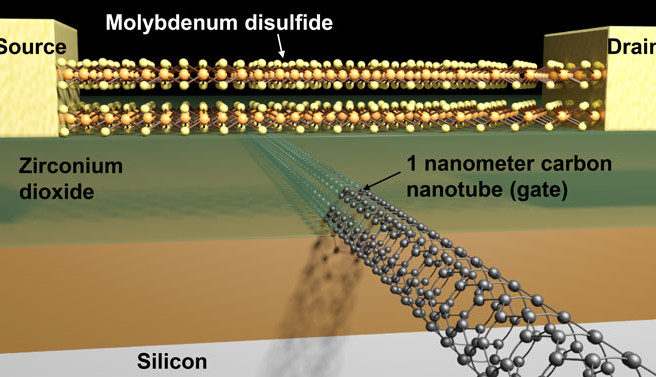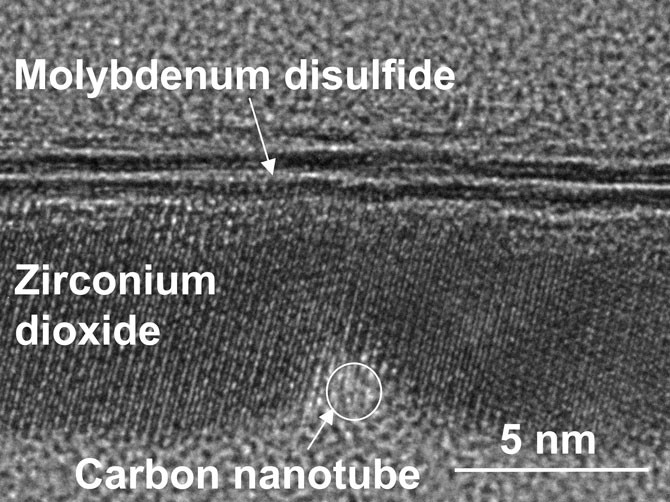Tiniest transistor yet has a 1nm gate length
October 14, 2016
on
on

Researchers have successfully demonstrated a working transistor which has a gate structure just 1 nm long. That’s equal to around six atoms in a line. A human hair is 50,000 times thicker. Looks like Moore’s Law is back in the ring and ready for the next round.
Physicists and engineers are continually striving to achieve ever smaller transistor geometry. Until recently it was thought that gate channel lengths as short as 5 nm were about as small as you could get before the transistor characteristics become unacceptable. Researchers at the Department of Energy at Lawrence Berkeley National Laboratory however have achieved a massive breakthrough. With 1 nm gate geometry we can expect in the future to see a dramatic shrinking of devices which use lots of transistors. Up till now we have only managed to achieve practical working examples using 7 nm geometry. It seems as though Moore’s law still has a few more years to run before we can finally throw in the towel and declare: rien ne va plus.
The researchers were able to build the transistor with a 1 nm physical gate by using a Molybdenum Disulfide (MoS2) bilayer gate (a material normally used as an additive to lubricants) and a single-walled carbon nanotube gate electrode. MoS2 is thought to have great potential for use in LEDs, Laser diodes, solar cells and now, as we see the production of super-tiny transistors. The findings were published in the in the pages of the scientific publication Science.

Elektron microscope image of the transistor . Source: Qingxiao Wang / UT Dallas.
Physicists and engineers are continually striving to achieve ever smaller transistor geometry. Until recently it was thought that gate channel lengths as short as 5 nm were about as small as you could get before the transistor characteristics become unacceptable. Researchers at the Department of Energy at Lawrence Berkeley National Laboratory however have achieved a massive breakthrough. With 1 nm gate geometry we can expect in the future to see a dramatic shrinking of devices which use lots of transistors. Up till now we have only managed to achieve practical working examples using 7 nm geometry. It seems as though Moore’s law still has a few more years to run before we can finally throw in the towel and declare: rien ne va plus.
The researchers were able to build the transistor with a 1 nm physical gate by using a Molybdenum Disulfide (MoS2) bilayer gate (a material normally used as an additive to lubricants) and a single-walled carbon nanotube gate electrode. MoS2 is thought to have great potential for use in LEDs, Laser diodes, solar cells and now, as we see the production of super-tiny transistors. The findings were published in the in the pages of the scientific publication Science.

Elektron microscope image of the transistor . Source: Qingxiao Wang / UT Dallas.
Read full article
Hide full article


Discussion (0 comments)